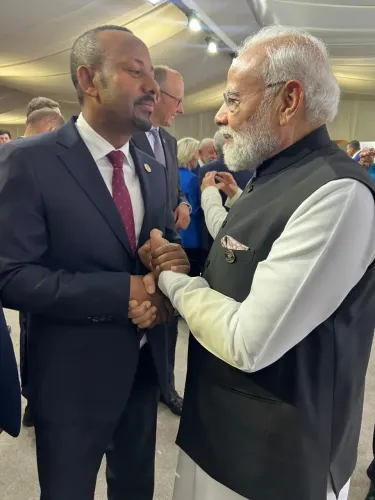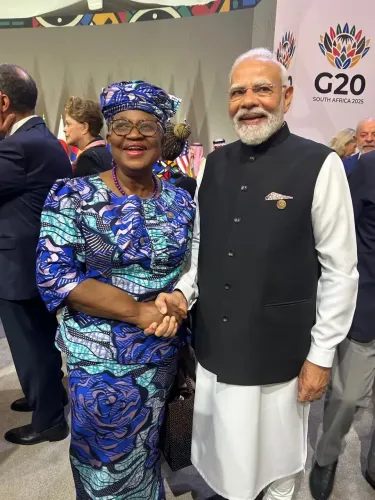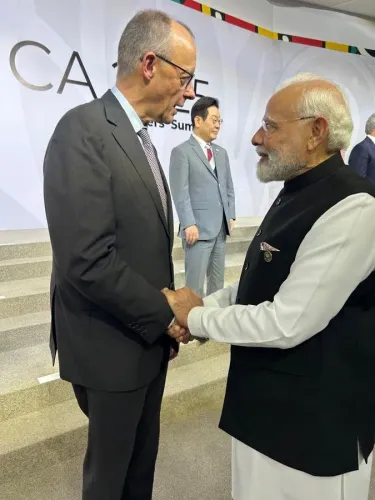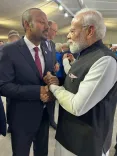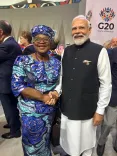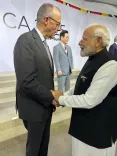How Will PM Keir Starmer’s Mumbai Visit Strengthen India-UK Ties?
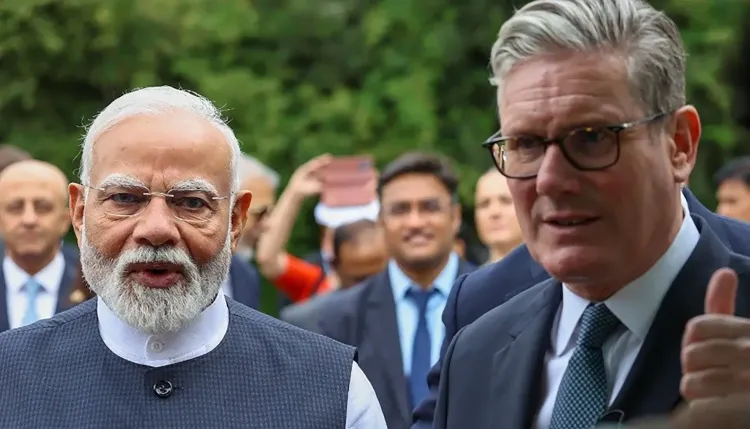
Synopsis
Key Takeaways
- Strengthening bilateral trade and investment
- Enhancing technology and innovation collaboration
- Fostering defence and security cooperation
- Commitment to climate change initiatives
- Building on Vision 2035 for future growth
New Delhi, Oct 6 (NationPress) Prime Minister Narendra Modi and UK Prime Minister Keir Starmer are set to convene in Mumbai this week, where they will engage in discussions aimed at further enhancing bilateral trade and investment, technology and innovation, defence and security, climate and energy, health, education, as well as people-to-people relations. They will also address various issues of regional and global significance.
The UK Prime Minister is expected to arrive in India on October 8, and both leaders will participate in the sixth edition of the Global Fintech Fest in Mumbai on October 9, where they will deliver keynote speeches.
During their meeting, they will interact with business leaders and industry figures regarding the opportunities arising from the India-U.K. Comprehensive Economic and Trade Agreement, which serves as a cornerstone of the future economic partnership between India and the UK.
They will also review the progress of the India-U.K. Comprehensive Strategic Partnership in line with ‘Vision 2035’, a comprehensive and time-sensitive roadmap of programs and initiatives set forth for the next decade.
Earlier, on July 24, 2025, PM Modi's visit to London resulted in the signing of the historic Comprehensive Economic and Trade Agreement (CETA), along with the Vision 2035 document and a new Defence Industrial Roadmap.
The CETA aims to elevate bilateral trade and economic collaboration. The UK has proposed zero duties on 99.1% of Indian goods, promoting professional mobility for skilled workers and improving access to services. This agreement targets doubling bilateral trade by 2030 and encourages cooperation in sectors like digital trade, sustainability, and innovation.
Explaining the benefits of the agreement, it was noted that it will facilitate market access in the UK for Indian products such as textiles, footwear, gems, jewellery, seafood, and engineering goods. Conversely, goods manufactured in the UK, including medical devices and aerospace components, will become more affordable for Indian consumers and industries.
The main objectives of India-UK Vision 2035 include fostering growth and job creation in both nations, establishing an education and skills partnership to cultivate the next generation of global talent, and advancing cutting-edge technology and research. This is built on the Technology Security Initiative, which focuses on future telecommunications, AI, critical minerals, semiconductors, quantum technology, biotechnology, and advanced materials.
Cooperation in defence and security, with a mutual commitment to peace, security, and prosperity in the Indo-Pacific region and beyond, is another critical component of the vision. Additionally, it encompasses a climate partnership dedicated to enhancing clean energy, mobilizing climate finance significantly, and improving resilience.
The India-UK Defence Industrial Roadmap is designed to strengthen collaboration in the co-designing, co-developing, and co-producing of defence products to meet the increasing demand in both nations as well as in the global market.
This initiative includes a wide range of activities such as joint military exercises, port visits, technological defence cooperation, promoting the Make in India initiative, and knowledge exchange among subject matter experts for sharing best practices (SMEEs), along with defence education and procurement.
Regular bilateral and multilateral military drills, including Exercise Konkan 2023, Exercise Cobra Warrior 2023, Exercise Ajeya Warrior 2023, and Exercise TarangShakti 2024, are also on the agenda.

